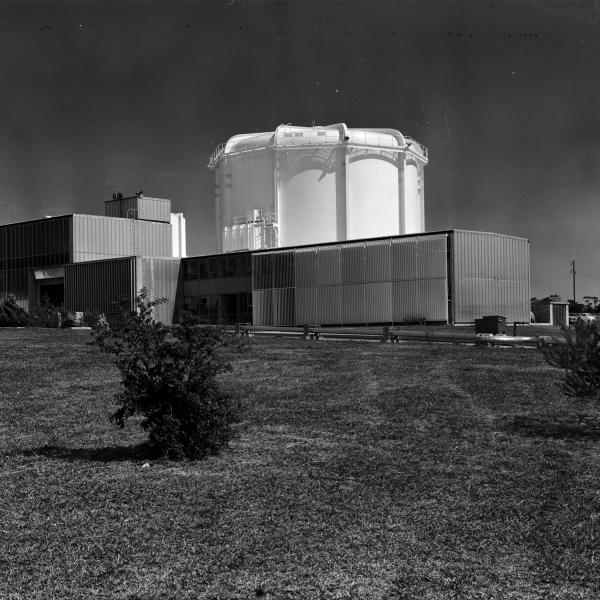

Published on the 25th July 2023 by ANSTO Staff
ANSTO scientists turned film critics on the weekend to provide some reviews of Christopher Nolan’s new film Oppenheimer, the story of the director of the Manhattan project which built the first atomic weapon during World War II.
As the operator of Australia’s only nuclear reactor, ANSTO owes part of its origins to the arrival of the atomic age, the discovery of fission as a source of nuclear energy, the response to the development and testing of atomic weapons, and the work of the International Atomic Energy Agency (IAEA) to promote the peaceful uses of nuclear.
Both the United Nations and the IAEA were formed as the world and scientific community grappled with the catastrophic consequence of the bombing of Hiroshima and Nagasaki and the commencement of the arms race.
It is also now known that there were damaging effects both on the local population of New Mexico and more broadly across the continental United States.
Nolan is not one to shy away from science, as his fans know well from the blockbuster Interstellar, where he went to great lengths for scientific accuracy in depicting a black hole. Nobel physicist Kip Thorne acted as a scientific advisor and published a paper on his calculations to accurately provide an image of a black hole.
In this two-part series, we are sharing the personal views of a number of our scientists on how the science was portrayed in the film.
The ANSTO critics diverged in their assessments, but all were struck but the depiction of the profound impact of using the device and fhe geopolitical ramifications.

“The Trinity demonstration was a seminal moment in history, and it’s no surprise Nolan gave this anything less than the ‘magnum opus’ treatment. This he did compellingly, in this three-hour biopic, centred around Oppenheimer - encapsulating science, socialism, political intrigue and all the moral dilemma which followed. To tell the tale with any less complexity, would seem cheap and ignore the important moral, scientific and geopolitical fallout which followed from Hiroshima.
“Under ordinary circumstances, the likelihood of engineering an atomic device from scratch would have taken longer than three years, and many scientists would have refused the task.
“It is Oppenheimer who stands central to the scientific effort and who must negotiate with both officers and scientists alike to fulfil an exciting yet horrifying task under the threat of annihilation: to create a device that was both a salvation and burden.
“Being an engineer, I would have liked to see more of the Manhattan project portrayed – the K-25 enrichment facility or the X-10 graphite reactor which bred the plutonium or that the atomic explosion was more faithfully portrayed in violet hues.
“But only on reflection, I am wiser in that Nolan wanted to make a movie to elevate the social conversation around the dilemma of the nuclear age and the importance of continued international efforts to maintain nuclear non-proliferation. “

"I really enjoyed the movie, like the book that it is based on, it presented the scientists involved as complex humans rather than just aloof geniuses," said Helen, who is an expert in science communication.
“The film fundamentally focused on the human interactions, with science being the driving tool for the goal of much of the movie – Oppenheimer leads a team that ends the war only to be persecuted in the USA later.
“The movie showed the rapidity of developments at the time really well, the timescale between the first fission experiment in 1938 In Berlin to the first reactor, Chicago Pile-1 in 1942 in the USA, was extraordinary, comparable to the space race occurring over 20 years later.
“Hot on the heels of the Chicago pile was the X10 reactor, going critical in 1943, which though only mentioned in the film, was the first reactor that was used for neutron scattering experiments.
“It would be nice to imagine a world where the first thought on splitting a uranium atom would have been ‘ooo this would be good for energy’ rather than ‘this could make a bomb’, but the lasting legacy – from morality, global politics to technological – of the Manhattan project cannot be denied.”

"It was an exciting, suspenseful film but I felt the science was left a bit abstract in Oppenheimer," said Kirrily, who is the former National Secretary of the Australian Institute of Physics
“As Christopher Nolan intended, the focus was more on the ethical questions and the personal dramas. I feel that the science was brushed over in such a high-level way and that Nolan wanted to use it as a confusing element. To be honest, I lost track of who was who and which part of the project they were working on. There was such a large cast!
“Some characters even made comments like, 'Quantum mechanics is hard', which I disagree with – it’s only hard if someone hasn't explained it properly. As a physicist watching the movie, I think they could have been much clearer on the science involved, but again, I believe Nolan used such high-level jargon as a confusing element to the film intentionally. It made the audience feel separated from these scientific giants. As a scientist and teacher, I think this is a poor way to represent science – it just continues to give people the impression that ‘science is too hard’.”
Read more in Part 2
